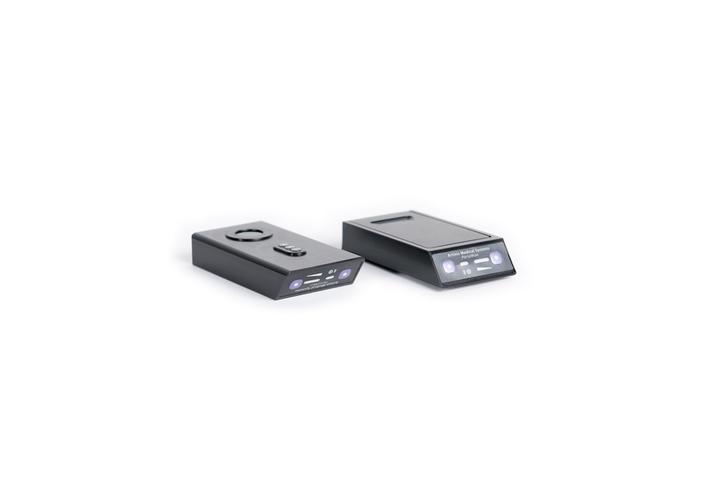PortaMon
The gold-standard research device for the measurement of muscle oxygenation

Publications using the PortaMon
Comparison of Hemodynamic and Cerebral Oxygenation Responses during Exercise between Normal-Weight and Overweight Men
Obesity has negative impacts on cardiovascular function and may increase cerebrovascular complications during exercise. We compared hemodynamic and cerebral oxygen changes during high-intensity exercise between overweight (OW) and normal-weight (NW) …
Muscle Strength, Oxygen Saturation and Physical Activity in Patients with Chronic Exertional Compartment Syndrome Compared to Asymptomatic Controls
Background One of the most common causes of exercise-induced pain in the lower leg is chronic exertional compartment syndrome (CECS). Research is limited on muscle strength, oxygen saturation and physical activity in patients with CECS. Purpose To …
Skeletal muscle oxidative adaptations following localized heat therapy
Abstract Repeated heat treatment has been shown to induce oxidative adaptations in cell cultures and rodents, but similar work within human models is scarce. This study investigated the effects of 6 weeks of localized heat therapy on near-infrared …
Adaptations to 4 weeks of high-intensity interval training in healthy adults with different training backgrounds
Purpose: This study investigated the physical fitness and oxygen uptake kinetics ([Formula: see text]) along with the exercise-onset O2 delivery (heart rate kinetics, τHR; changes in normalized deoxyhemoglobin/[Formula: see text] ratio, …
Relationship between muscle venous blood oxygenation and near-infrared spectroscopy: quantitative analysis of the Hb and Mb contributions
A linear relationship between skeletal muscle venous (C T ven ) and oxygenated (ΔHbMbO 2,N ) or deoxygenated (ΔHHbMb N ) near-infrared spectroscopy (NIRS) signal suggests a main Hb contribution to the NIRS signal. However, experimental, and …
Association between Femoral Artery Flow-Mediated Dilation and Muscle Oxygen Saturation Parameters in Healthy, Young Individuals
Flow-mediated dilation (FMD) and muscle oxygen saturation (StO2) are measurements utilized to assess macro- and microvascular function, respectively. Macro- and microvascular dysfunction may occur differently depending on the clinical condition. …
Effect of Lower Limb Venous Dilation on the Autonomic Cardiac Response among Healthy Young Men
Venous occlusion of the lower limbs, which simulates edema, can alter heart rate variability (HRV) by increasing feedback information from group III/IV sensory fibers. Our aim was to quantify this effect among healthy young men. The study group …
Long recovery induced by short exercise-to-rest ratio and effort duration determine the influence of hypoxia during repeated cycling sprints to exhaustion
Introduction Repeated sprints exercise (RSE) performed in hypoxia (RSH) induce greater performance improvement than in normoxia (Brocherie et al., 2017). It has been previously argued that RSH efficiency depend on the oxidative-glycolytic balance …
Agreement between multiparametric MRI (PIVOT), Doppler ultrasound, and near-infrared spectroscopy-based assessments of skeletal muscle oxygenation and perfusion
Skeletal muscle perfusion and oxygenation are commonly evaluated using Doppler ultrasound and near-infrared spectroscopy (NIRS) techniques. However, a recently developed magnetic resonance imaging (MRI) sequence, termed PIVOT, permits the …
Astragalosides Supplementation Enhances Intrinsic Muscle Repair Capacity Following Eccentric Exercise-Induced Injury
Astragalosides have been shown to enhance endurance exercise capacity in vivo and promote muscular hypertrophy in vitro. However, it remains unknown whether astragalosides supplementation can alter inflammatory response and enhance muscle recovery …
Physically active men present a healthier cardiometabolic profile in response to a balanced meal compared to inactive men
Purpose: Post-meal cardiometabolic responses are critical for health, and may be influenced by physical activity. The objective of this study was to investigate the effect of habitual physical activity level on the metabolic, autonomic nervous system …
Assessing functional sympatholysis during rhythmic handgrip using Doppler ultrasound and near-infrared spectroscopy: sex differences and test-retest reliability
The effects of sympathetic activity on vasoconstriction are dampened in active skeletal muscle during exercise, a phenomenon termed functional sympatholysis. Limited work has examined the influence of sex on the magnitude of sympatholysis or the …
Reference values for triceps surae tissue oxygen saturation by near-infrared spectroscopy
Abstract Objective. To establish the reference values for peripheral tissue perfusion of the triceps surae muscle assessed by Near-infrared spectroscopy (NIRS) at rest and in progressive effort. Approach. A total of 288 apparently healthy …
Ischaemic preconditioning blunts exercise‐induced mitochondrial dysfunction, speeds oxygen uptake kinetics but does not alter severe‐intensity exercise capacity
We examined the effect of ischaemic preconditioning (IPC) on severe-intensity exercise performance, pulmonary oxygen uptake ( ) kinetics, skeletal muscle oxygenation (muscle tissue O2 saturation index) and mitochondrial respiration. Eight men …
Near-Infrared Spectroscopy Used to Assess Physiological Muscle Adaptations in Exercise Clinical Trials: A Systematic Review
Using muscle oxygenation to evaluate the therapeutic effects of physical exercise in pathologies through near-infrared spectroscopy (NIRS) is of great interest. The aim of this review was to highlight the use of muscle oxygenation in exercise …
Detection of hypoxia by near-infrared spectroscopy and pulse oximetry: a comparative study
Significance: Pulse oximetry is widely used in clinical practice to monitor changes in arterial oxygen saturation (SpO2). However, decreases in SpO2 can be delayed relative to the actual clinical event, and near-infrared spectroscopy (NIRS) may …
Intra- and Inter-Day Reliability of the NIRS Portamon Device after Three Induced Muscle Ischemias
(1) Background: Near-infrared spectroscopy (NIRS) is an innovative and non-invasive technology used to investigate muscular oxygenation. The aim of this study is to assess the within- and between-session reliability of the NIRS Portamon (Artinis, …
Near‐infrared spectroscopy estimation of combined skeletal muscle oxidative capacity and O $_textrm2$ diffusion capacity in humans
The final steps of the O2 cascade during exercise depend on the product of the microvascular-to-intramyocyte PO2 difference and muscle O2 diffusing capacity (DmO2). Non-invasive methods to determine DmO2 in humans are currently unavailable. Muscle …
Complex Network Model Reveals the Impact of Inspiratory Muscle Pre-Activation on Interactions among Physiological Responses and Muscle Oxygenation during Running and Passive Recovery
Although several studies have focused on the adaptations provided by inspiratory muscle (IM) training on physical demands, the warm-up or pre-activation (PA) of these muscles alone appears to generate positive effects on physiological responses and …